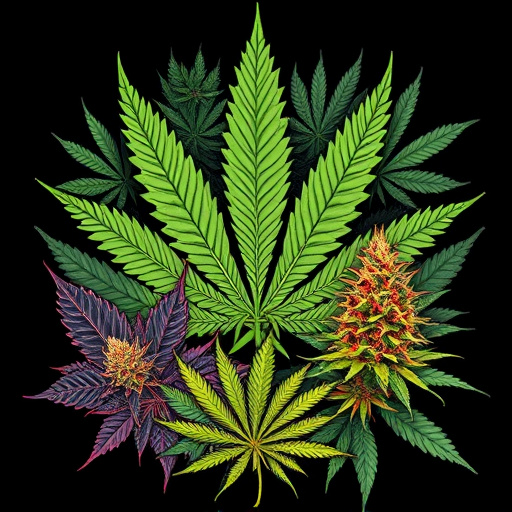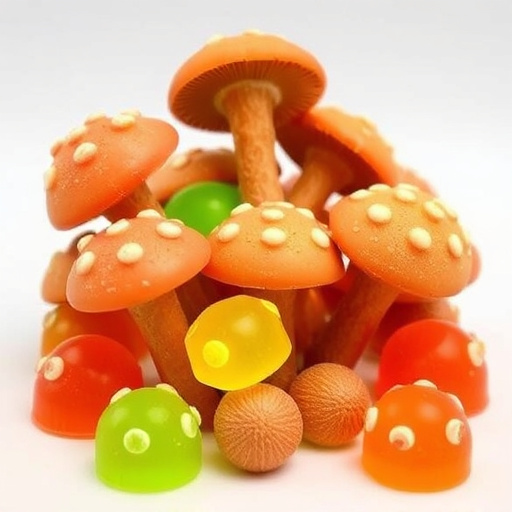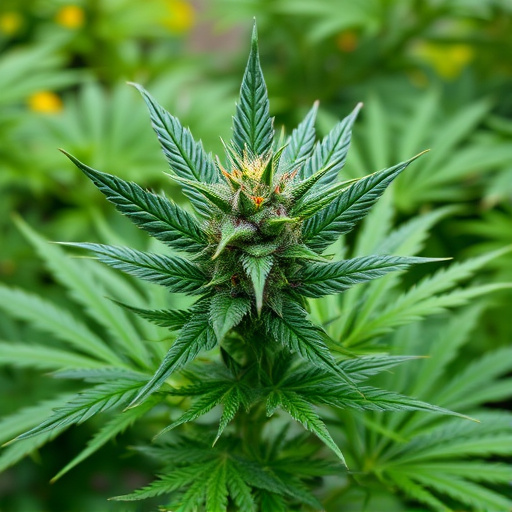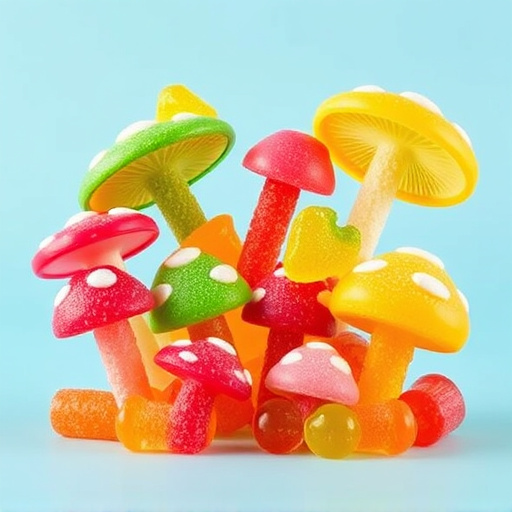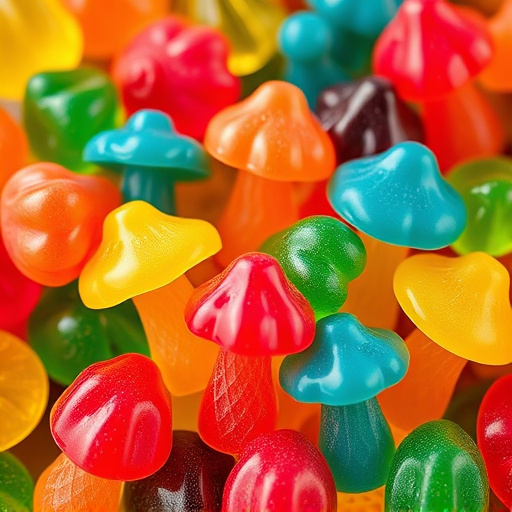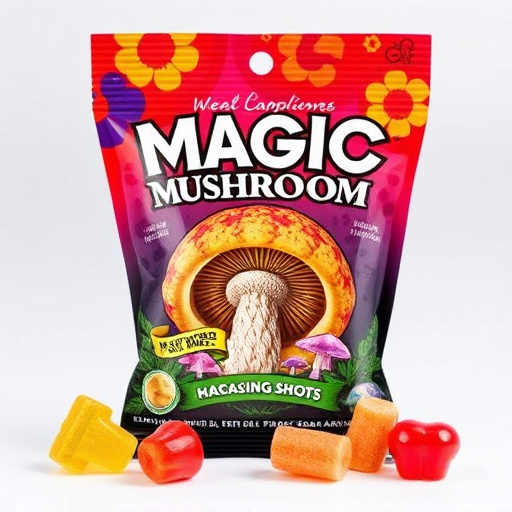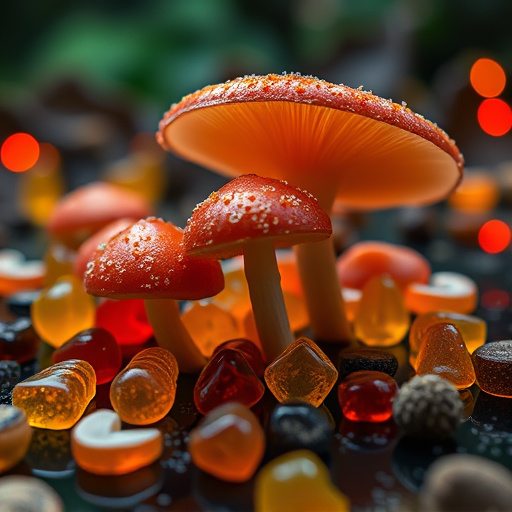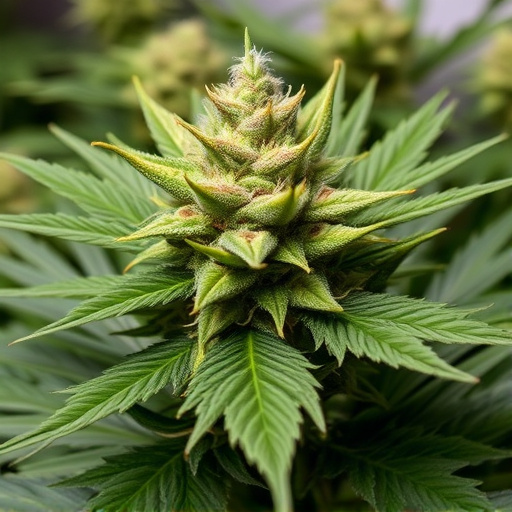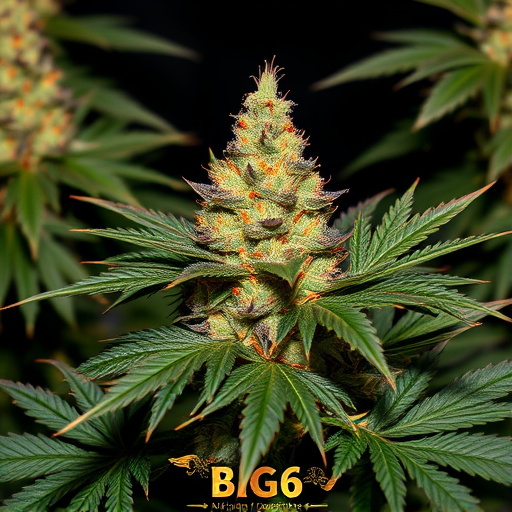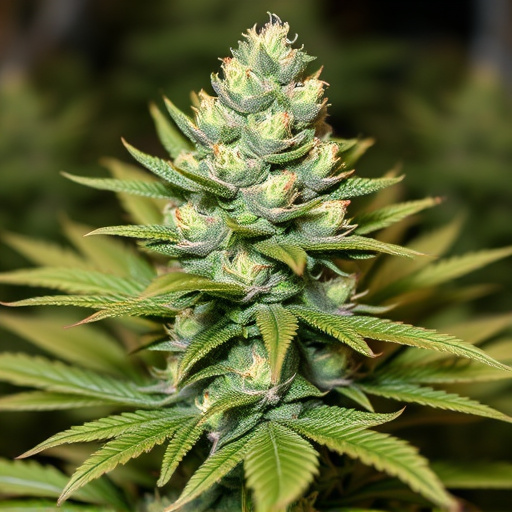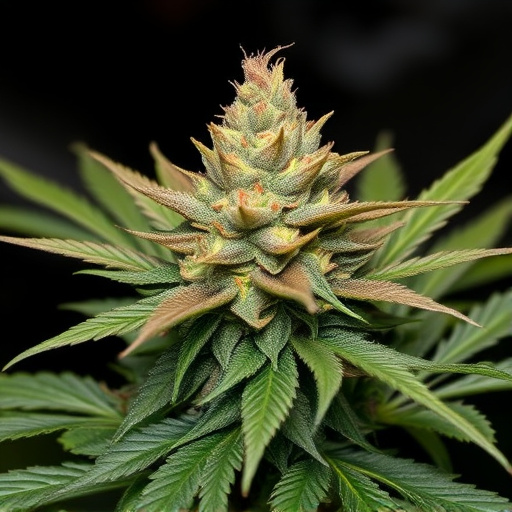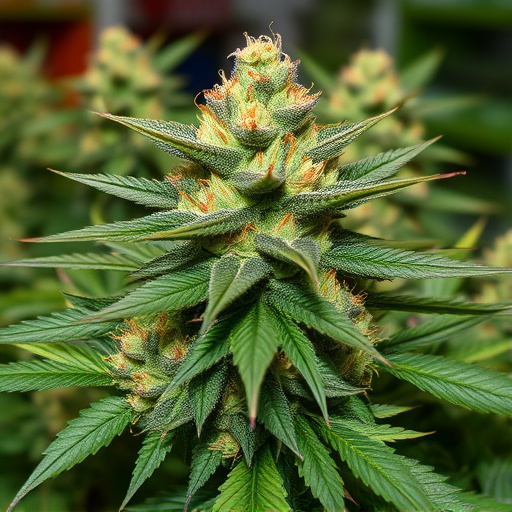Lighting is a critical factor in cannabis cultivation, particularly for big bud strains. Skilled growers use high-intensity LED lights mimicking natural sunlight to promote robust plant health and maximize resin production, enhancing strain quality. A 12-hour light/dark cycle triggers flowering, increasing cannabinoids and terpenes. Indica and sativa strains have different photoperiodic responses; cultivators can leverage advanced lighting technologies like LED and HPS bulbs for precise control over light spectra to optimize growing conditions for big bud strains. Balancing blue and red light spectra enhances resinous buds with higher THC and CBD concentrations, catering to the unique needs of these varieties.
“Unveiling the Secrets of Premium Cannabis: The Impact of Growing Environments on Big Bud Strains
Growing conditions play a pivotal role in shaping the quality and characteristics of cannabis plants, particularly desired varieties like Big Bud. This article delves into the intricate relationship between environmental factors, lighting, soil health, and nutrient management, and their collective influence on cultivating top-tier Big Bud strains. By exploring these essential aspects, growers can optimize their practices to produce cannabis of exceptional potency and flavor.”
- The Role of Lighting in Cannabis Growth and Quality
- – Understanding the impact of light spectrum and intensity on various cannabis strains
- – Optimizing lighting for specific Big Bud strains and desired cannabinoid profiles
The Role of Lighting in Cannabis Growth and Quality
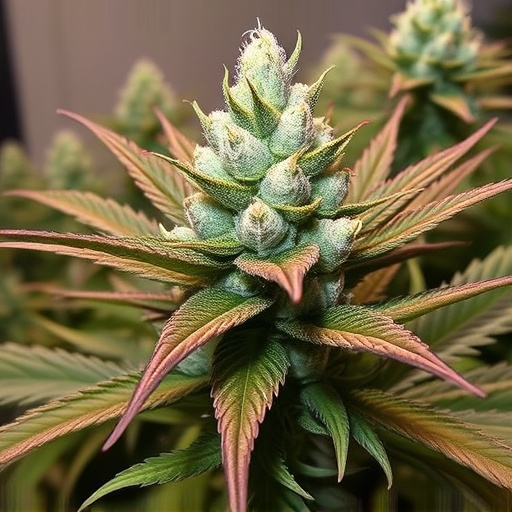
Lighting plays a pivotal role in cannabis cultivation, significantly influencing plant growth and final product quality. Different light spectrums stimulate various stages of cannabis development, from seedling to flowering. For big bud strains, known for their dense and potent characteristics, optimal lighting conditions are crucial. High-intensity LED lights that mimic natural sunlight are often preferred due to their ability to provide balanced light intensity across the entire spectrum, promoting robust plant health and maximizing resin production, key factors in enhancing cannabis quality.
The timing and duration of light exposure also matter. Cannabis plants require a specific 12-hour light/dark cycle, with adequate darkness facilitating growth while controlled light periods stimulate flowering. Skilled growers manipulate this cycle to trigger desired outcomes, ensuring that big bud strains develop fully and produce higher levels of cannabinoids and terpenes, all of which contribute to superior cannabis quality.
– Understanding the impact of light spectrum and intensity on various cannabis strains
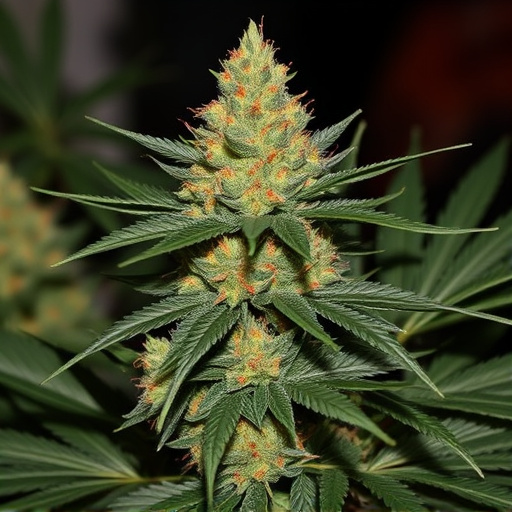
The light spectrum and intensity play a pivotal role in shaping the growth and overall quality of cannabis plants, especially when it comes to cultivating prized big bud strains. Different strains have distinct photoperiodic responses, meaning their growth patterns and cannabinoid profiles are influenced by the type and level of light they receive. For instance, many indica-dominant varieties thrive under lower light intensities, promoting dense, broad leaves and higher levels of CBD and THC, attributes highly sought after in medicinal cannabis. On the other hand, sativa strains tend to prefer higher light intensities, which can result in skinnier leaves, faster growth rates, and higher concentrations of terpenes, contributing to their characteristic uplifting effects.
Understanding these nuances allows cultivators to optimize growing conditions for specific strains. Advanced lighting technologies, such as LED and HPS bulbs, offer precise control over the light spectrum, enabling growers to mimic natural sunlight or tailor light profiles to suit different cannabis varieties. This precision cultivation not only enhances overall plant health but also amplifies desired cannabinoid and terpene profiles, ensuring that each big bud strain meets the highest standards of quality and potency.
– Optimizing lighting for specific Big Bud strains and desired cannabinoid profiles
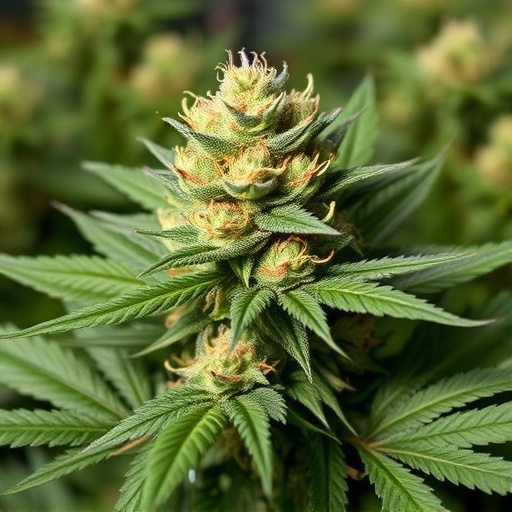
Growing cannabis is an art, and for specific Big Bud strains, optimizing lighting plays a pivotal role in achieving desired cannabinoid profiles. Different strains have unique requirements when it comes to light intensity and spectrum. For instance, indoor growers can use high-pressure sodium (HPS) lamps to simulate outdoor conditions, promoting robust growth for Big Bud varieties. However, for flowering stages, transitioning to LED lights with specific wavelength ranges can significantly impact cannabinoid production. Cannabinoids like THC and CBD have different optimal light ranges; understanding this allows cultivators to manipulate lighting to enhance desired compounds in Big Bud strains.
The spectrum of light is crucial, as different colors target specific photosynthesis processes. Blue light encourages vegetative growth, while red light stimulates flowering and cannabinoid synthesis. By carefully controlling the balance between these spectra, growers can guide plants to produce more resinous buds with higher cannabinoid concentrations, ensuring top-quality Big Bud strains.
In conclusion, understanding how growing environments, particularly lighting conditions, influence cannabis quality is paramount. When it comes to Big Bud strains, optimizing light spectrum and intensity can significantly enhance cannabinoid profiles, ensuring superior products. By tailoring lighting for specific strains, cultivators can achieve the desired effects, making each harvest a high-quality, vibrant testament to their skills.
